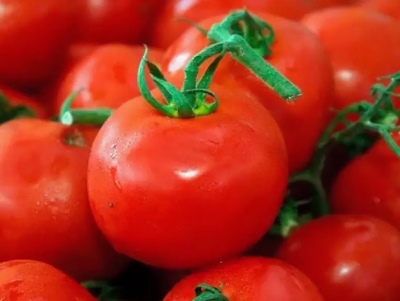
- Authors: Gavrish S.F., Kapustina R.N., Artemyeva G.M., Filimonova Yu.A., Redichkina T.A., Kibanova N.A.
- Year of approval: 2015
- Category: hybrid
- Growth type: determinant
- Appointment: fresh consumption
- Ripening period: mid-season
- Ripening time, days: 115-120
- Growing conditions: for film greenhouses
- Bush size: medium-sized
- Bush height, cm: 120-130
There are varieties of tomatoes that are grown exclusively in greenhouses. A good option is the Leo Tolstoy variety, which has already established itself in most regions of our country.
Description of the variety
Hybrid tomato belongs to the determinant type of growth. It behaves ideally in plastic greenhouses, gives a stable yield with high-quality care. The bushes are medium-sized, up to 130 cm high. The foliage is medium in size, the color is light green.
Leo Tolstoy's fruits are served fresh.
The main qualities of the fruit
Most tomato varieties have green unripe fruits, and this one is no exception. When ripe, they are red.
Tomatoes are large, can weigh up to 250 grams. They are flat-round in shape. A dense pulp is hidden inside.
Taste characteristics
Leo Tolstoy has a pleasant tomato aroma.
Ripening and fruiting
The described variety is mid-season. From the moment the seeds were planted and until the fruit is harvested, it takes up to 120 days.
Yield
The yield of the variety is 10-12 kg / sq. m.
The timing of planting seedlings and planting in the ground
For seedlings, tomato should be sown from March to April. When the plants are old enough, they are transferred to a greenhouse in April-May. In the south, planting in the ground is allowed in the month of June.

Growing tomato seedlings is an extremely important process, because it largely depends on whether the gardener will be able to harvest at all. All aspects must be taken into account, from seedbed preparation to planting in the ground.
Landing scheme
The planting pattern used is 40 x 60 cm.

Growing and care
As for the soil requirements, Leo Tolstoy is best suited for growing tomatoes, of course, fertile, but at the same time with a moderate humus content, with a slightly acidic pH reaction, as well as an average moisture level and good drainage.
When the seeds hatch, the seedlings are well watered 1-2 times a month with milk diluted with water in a ratio of 1: 5. Lev Tolstoy's tomato is planted in light fertile soil. Further, watering is carried out in such a way that the soil remains moist, but not swampy.
To retain moisture, you can use straw mulch, which also prevents weeds from appearing, which, in turn, are the main competitors for nutrients in the soil. Sawdust or leaves are suitable as mulch, which should be spread between the rows of tomatoes Leo Tolstoy.
After planting in the greenhouse, the lower leaves are removed. Next, you need to regularly pinch the tomato and remove the diseased greens. The procedure is aimed at improving the quality of the fruits, primarily in terms of their size.
Long-acting fertilizers should be used with this variety, which are applied once or twice during the growing season. It is easiest to choose special commercial-type top dressing for tomatoes with a balanced composition, containing primarily trace elements - magnesium, calcium, boron, copper, molybdenum and manganese, the absence of which most often makes itself felt during the cultivation of tomatoes.
Leo Tolstoy tomatoes can also be fed with infusions, such as nettles, which are used to make compost for plant nutrition. Dandelion or horsetail are used in the same way. Nowadays, so-called organic fertilizers can also be found on sale.
Recommended doses of mineral components:
- nitrogen - from 120 to 150 kg / ha;
- phosphorus - from 80 to 100 kg / ha;
- potassium - from 150 to 200 kg / ha.




A plant needs different micronutrients at each stage of growth. All fertilizers can be divided into two groups: mineral and organic. Folk remedies are often used: iodine, yeast, bird droppings, eggshells.
It is important to observe the rate and period of feeding. This also applies to folk remedies and organic fertilizers.
Disease and pest resistance
Treatment with copper sulfate, fungicides and insecticides is carried out on a regular basis, repeating the procedure every week. Thus, the Leo Tolstoy tomato plantation will be free from pests and pathogenic microorganisms.


Resistant to adverse weather conditions
Leo Tolstoy is a cold-resistant hybrid.
Growing regions
Since this variety only grows in greenhouses, it can be grown in any region.

























































































